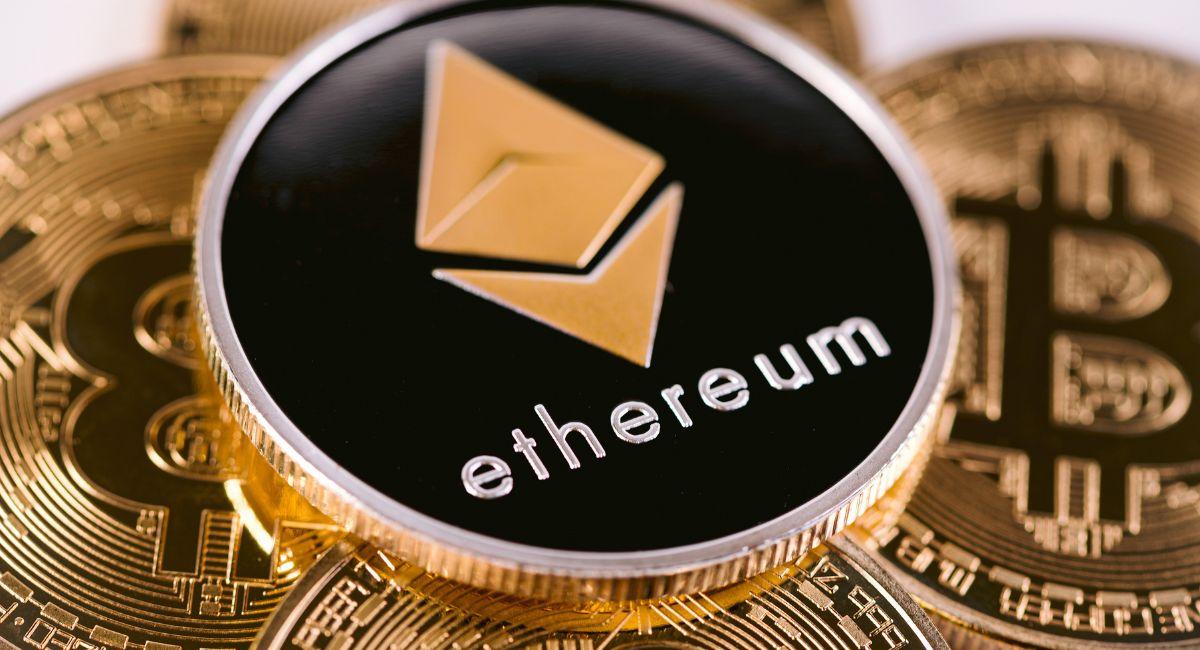January 15, 2024 by Diana Ambolis
446
Solana has emerged as a promising solution to some of the challenges faced by Ethereum, offering a scalable and efficient blockchain infrastructure. This article explores how Solana has addressed key issues within the Ethereum ecosystem, positioning itself as a robust alternative in the realm of Web3. Solana and Ethereum differ not only in their consensus
Solana has emerged as a promising solution to some of the challenges faced by Ethereum, offering a scalable and efficient blockchain infrastructure. This article explores how Solana has addressed key issues within the Ethereum ecosystem, positioning itself as a robust alternative in the realm of Web3.
Solana and Ethereum differ not only in their consensus mechanisms but also in their approaches to scalability. It uses a combination of innovative technologies, including a unique time-stamping method called Proof of History (PoH) and a fast and efficient consensus algorithm known as Proof of Stake (PoS). These features enable Solana to process a high number of transactions per second, making it one of the fastest blockchains in the industry.
Ethereum, on the other hand, has been a pioneer in the blockchain space and is known for introducing smart contracts and decentralized applications (DApps). However, Ethereum has faced challenges related to scalability, especially with network congestion and high gas fees during times of increased activity.
While Ethereum has plans to address these scalability issues through Ethereum 2.0, Solana has positioned itself as a competitive alternative, providing high throughput and low transaction costs from the outset.
Developers considering these platforms for their projects evaluate factors such as transaction speed, cost efficiency, and ecosystem support to make an informed decision based on their specific needs and goals. Both Solana and Ethereum contribute to the diverse and evolving landscape of blockchain technology.
Also, read- How Do Smart Contract Audits Work On Solana And Ethereum
Top 4 Ethereum’s challenges solved by Solana

Scalability
One of Ethereum’s notable challenges has been scalability, leading to network congestion and high transaction fees during periods of high demand. Solana employs a unique consensus mechanism called Proof of History, coupled with Proof of Stake, to achieve unparalleled transaction throughput. This significantly reduces congestion, enabling Solana to process thousands of transactions per second at a fraction of the time and cost compared to Ethereum.
Solana’s architecture allows for low transaction costs, offering a cost-effective solution for users and developers. This is a stark contrast to Ethereum’s gas fees, which have been a point of contention, especially during times of network congestion. Solana’s commitment to affordability enhances its appeal as a blockchain for decentralized applications (DApps) and smart contracts.
Speed and Latency
Solana’s innovative consensus mechanism results in sub-second confirmation times for transactions. Ethereum, on the other hand, faces latency issues, with confirmation times varying based on network activity. It’s swift transaction confirmations enhance user experience, making it a preferred choice for applications requiring near-instantaneous interactions.
- High Performance for DApps
The high-performance capabilities make it well-suited for resource-intensive decentralized applications. Ethereum has encountered challenges with delays and increased computational costs for complex DApps. Solana’s architecture provides a solution for developers seeking a platform that can handle the demands of sophisticated applications without compromising speed.
Ecosystem Growth and Developer Adoption
- Developer-Friendly Environment
Solana’s commitment to a developer-friendly environment is evident in its support for popular programming languages and developer tools. Ethereum, while widely adopted, has faced criticisms for its steep learning curve and development challenges. Solana’s approach aims to attract a broader range of developers, fostering innovation and expanding its ecosystem.
It has successfully integrated with the booming sectors of Decentralized Finance (DeFi) and Non-Fungible Tokens (NFTs). Its high throughput and low transaction costs make it an attractive choice for projects in these domains, providing an alternative for users seeking efficient and cost-effective solutions outside of Ethereum’s ecosystem.
Also, read- The Top 10 DApp Browser Platforms In Blockchain Community
Is Solana part of Ethereum?

No, It is not part of Ethereum. It is a separate blockchain platform and cryptocurrency that operates independently of Ethereum. While both Solana and Ethereum are blockchain networks that support decentralized applications (DApps) and smart contracts, they have different underlying technologies and consensus mechanisms.
Ethereum is based on a proof-of-stake (PoS) consensus mechanism, and it has been transitioning to Ethereum 2.0, which aims to improve scalability and energy efficiency. Solana, on the other hand, uses a unique consensus mechanism called Proof of History (PoH) combined with a practical Byzantine Fault Tolerance (pBFT) consensus. This approach is designed to achieve high throughput and low transaction costs.
In summary, Solana and Ethereum are distinct blockchain platforms, each with its own set of features, technology stack, and consensus mechanisms. They operate independently, and assets or tokens on one blockchain are not automatically part of the other.
Why Solana will overtake Ethereum?

It’s important to note that predicting the future performance of blockchain platforms like Solana and Ethereum is challenging, and factors influencing their success are subject to change. However, there are some arguments that proponents of Solana put forth as reasons why it might be well-positioned to compete with or potentially overtake Ethereum in certain aspects:
- Scalability: It is often praised for its high throughput and low transaction costs. Its unique consensus mechanism, Proof of History (PoH), along with practical Byzantine Fault Tolerance (pBFT), is designed to enable fast transaction processing. This scalability advantage could attract developers and users looking for a blockchain with efficient and cost-effective transactions.
- Performance: Its focus on performance is evident in its design. The platform aims to handle a large number of transactions per second (TPS), making it suitable for a wide range of applications, including decentralized finance (DeFi) and non-fungible tokens (NFTs). If Solana can consistently deliver on its performance promises, it may gain traction among users and developers.
- Ecosystem Growth: A vibrant and expanding ecosystem is crucial for the success of any blockchain platform. Solana has been actively working to attract developers and projects to build on its network. The growth of decentralized applications (DApps), projects, and partnerships within the Solana ecosystem could contribute to its competitiveness.
- Lower Transaction Costs: Solana’s architecture aims to keep transaction costs low, which is particularly appealing in an environment where high gas fees on other networks, like Ethereum, have been a concern. Lower transaction costs could make Solana an attractive option for developers and users, especially for applications involving frequent transactions.
While these factors might contribute to Solana’s competitiveness, Ethereum remains a dominant force in the blockchain space with a well-established network effect, a large developer community, and widespread adoption. Ethereum is also undergoing upgrades, such as Ethereum 2.0, to address scalability concerns.
It’s essential to approach these comparisons with a degree of caution, as the blockchain landscape is dynamic, and factors such as technological advancements, community support, and market dynamics can influence the success of a blockchain platform over time. Both Solana and Ethereum have their strengths, and their future trajectories will depend on various factors, including how well they address scalability, security, and developer adoption.
Why Solana is an Ethereum killer?

The term “Ethereum killer” is often used colloquially in the cryptocurrency space to describe blockchain platforms that are perceived as potential competitors to Ethereum, particularly in terms of scalability, transaction speed, and cost-effectiveness. While Solana has gained attention for its impressive performance and scalability, it’s important to note that the blockchain ecosystem is diverse, and different platforms serve different purposes. Here are some reasons why Solana is sometimes referred to as a potential “Ethereum killer”:
- Scalability: One of the key advantages is its focus on scalability. The platform is designed to handle a high throughput of transactions per second (TPS) with low latency. This scalability is seen as a potential solution to Ethereum’s challenges with high gas fees and network congestion during periods of heavy demand.
- Low Transaction Costs: Solana aims to keep transaction costs low, making it an attractive option for developers and users who are concerned about high gas fees on other networks, such as Ethereum. Lower transaction costs can be particularly important for decentralized finance (DeFi) applications and other projects with frequent transactions.
- Fast Confirmation Times: Its unique consensus mechanism, Proof of History (PoH), along with practical Byzantine Fault Tolerance (pBFT), is designed to enable fast confirmation times for transactions. This quick confirmation can contribute to a better user experience and support applications that require near-instant transaction finality.
- Growing Ecosystem: It has been actively working to attract developers and projects to build on its platform. A vibrant and expanding ecosystem is crucial for the success of any blockchain, and Solana’s efforts to grow its ecosystem could contribute to its competitiveness.
It’s important to recognize that while it has gained attention and has certain advantages, Ethereum remains a leading blockchain with a well-established network effect, a large developer community, and widespread adoption. Ethereum is also undergoing upgrades, such as Ethereum 2.0, to address scalability concerns.
The term “Ethereum killer” should be taken with caution, as the blockchain space is dynamic, and different platforms can coexist and serve different use cases. The competition and innovation within the blockchain industry are healthy for its overall development, and the success of any platform depends on various factors, including technology, community support, security, and adoption.
Conclusion
Its emergence as a promising solution for Ethereum’s challenges in Web3 is rooted in its commitment to scalability, speed, low transaction costs, and a developer-friendly environment. As the blockchain space continues to evolve, Solana’s innovative approach positions it as a key player, offering a viable alternative and contributing to the diversification and growth of the decentralized ecosystem.

































































